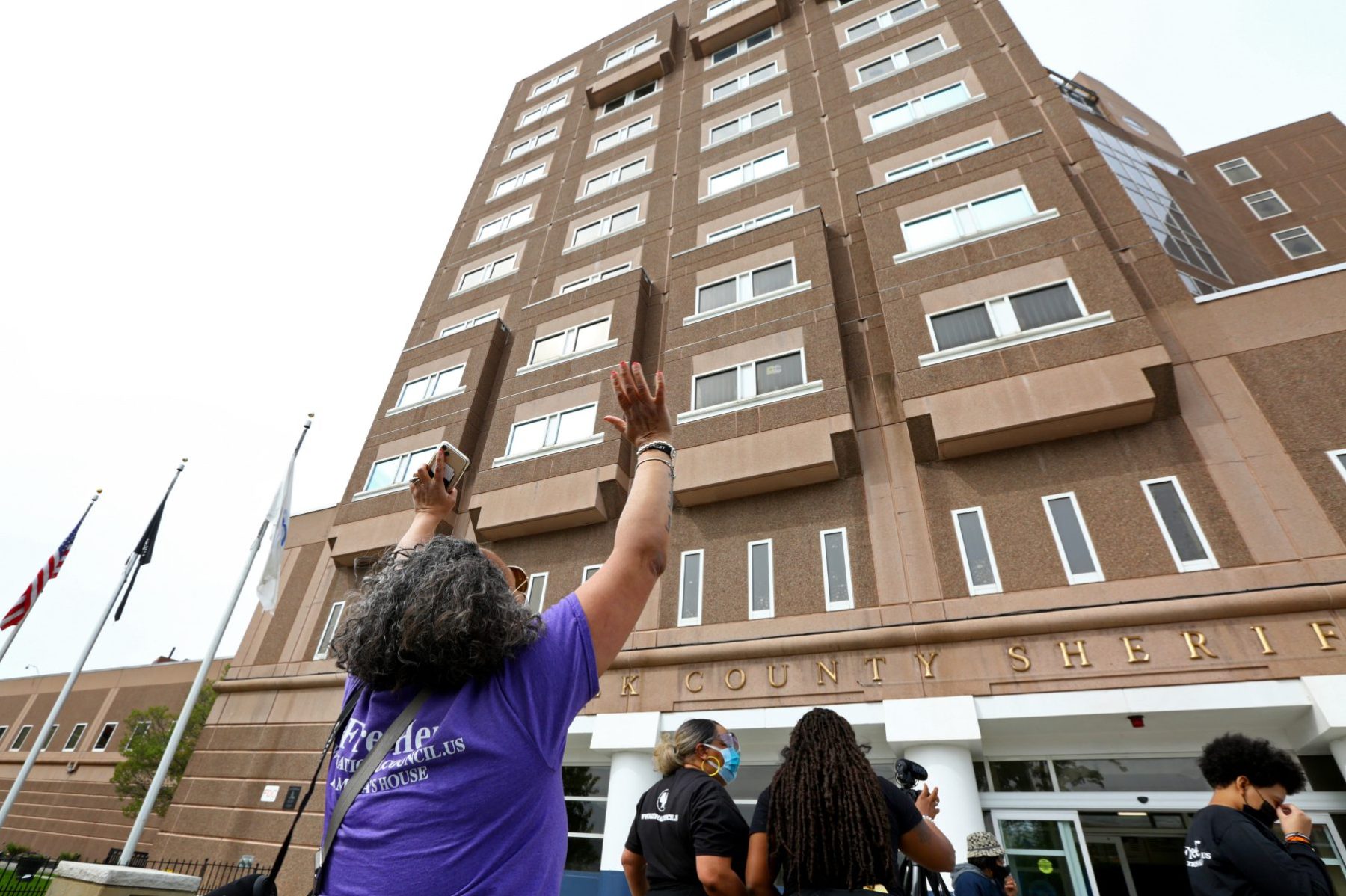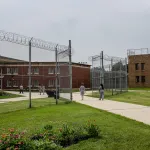Jail populations throughout the country have reverted to nearly pre-pandemic levels after seeing big declines in the early months of 2020. Though women represent a small percentage of the country’s total incarcerated population, their jail incarceration rates have increased more quickly than men’s from 2021 to 2022.
Up-to-date, aggregated data on incarceration numbers nationwide can be difficult to find. The federal Bureau of Justice Statistics (BJS) is the country’s primary source of data, but it releases reports years after the period they cover. Given this gap, researchers at New York University’s Public Safety Lab started the Jail Data Initiative, offering one non-government resource to help paint a picture of jail incarceration trends since the beginning of the pandemic.
“When I was looking for data on jail incarceration and not finding any systematic collection of data, it occurred to me that we could create this data of national scope by leveraging the fact that many jails post their daily jail rosters online every day,” said Anna Harvey, the director of NYU’s Public Safety Lab.
Researchers with the Public Safety Lab collected jail data from more than 1,300 counties, though not all of them have data for the duration of the pandemic. The dashboard highlights complete data for nearly 500 jail facilities from March 2020 until December 2022. The country has about 3,000 local jails in total, so the dashboard offers a limited snapshot that show a steep decline from March to May of 2020, followed by a noticeable rebound by October 2020 and a slower return to pre-pandemic incarceration levels over the next two years.
In the first wave of COVID-19, states and counties faced increased pressure to reduce jail and prison populations amid concerns about incarcerated people’s vulnerability to the virus and the adverse effects of lockdowns and isolation.
-
More from The 19th
- Illinois will be the first state to eliminate cash bail. Here’s why women led the push for reform.
- Mental health of incarcerated LGBTQ+ youth is understudied — but new analysis shows kids are in crisis
- Success of ‘slavery on the ballot’ measures could help incarcerated pregnant people of color
The coronavirus wreaked havoc on overcrowded jails and prisons. BJS data released in January 2022 indicated that there was a 46 percent increase in deaths among imprisoned people from 2019 to 2020.
As more people stayed indoors, jail bookings dropped. Some states and counties also adopted criteria to either divert or release nonviolent offenders.
In the jail facilities captured by the Jail Data Initiative dashboard, daily jail populations collectively declined by about 27 percent between March and May of 2020. For women, jail populations declined by 42 percent. However, this drop did not last long, and the populations started going up again by late May of 2020.
On the whole, the daily jail populations for both men and women have increased to nearly the same levels as before the pandemic, though jail admissions for women appear to be increasing at a faster pace, said Tracy Velázquez, senior manager for Safety & Justice at the Pew Charitable Trusts, which helped finance the Jail Data Initiative.
“While the increase in the jail populations for men from November 30 of [2021 to 2022] has been about a 2 percent increase, the number of women in jail actually had almost a 6 percent increase” – three times the rate of the men, Velázquez noted.
While the number of White women in the daily jail population rose 3 percent from the end of November 2021 to November 2022, the number of Black women grew nearly 15 percent, according to NYU’s database. More limited available data about Asian American and Pacific Islander women indicates that their daily jail numbers across about 300 facilities increased from 91 to 107 – a small growth in raw numbers but also a nearly 15 percent jump in a year. Figures from 191 jail rosters showed a 5 percent decline for Indigenous women in that period.
The database did not produce sufficient data for similar analysis on incarcerated transgender and nonbinary people.
The data highlights a larger trend: Women are the country’s fastest-growing incarcerated group. From 2008 to 2018, the women’s jail population grew by 15 percent while men’s decreased by 9 percent, according to federal data. This has been more acute in rural counties.
Women are more likely than men to enter correctional facilities with mental illness and preexisting health conditions, which not only raises their risk of complications in the event of a viral outbreak but also makes them susceptible to significant psychological harm.
In 2018, women had a nearly 7 percent higher mortality rate in jails than men, largely due to illness, suicide, and drug or alcohol intoxication.
Currently the country is experiencing a trifecta of illnesses: the flu, COVID and respiratory syncytial virus, which may further threaten incarcerated people as jail populations rise.
Little can be determined at this point from NYU’s data initiative about the reasons behind the recent incarceration increases.
Policies that helped keep jail populations down in early 2020 have fallen by the wayside. This coincided with reports by law enforcement of higher violent crime rates that led to calls by some officials and members of the public to take on more tough-on-crime approaches.
Despite these concerns, there is no indication that violent crime rates increased as a result of decarceration efforts that focus on nonviolent individuals, said Alycia Welch, associate director of the Prison and Jail Innovation Lab at the University of Texas at Austin. Welch is not affiliated with NYU’s Jail Data Initiative but researches women’s incarceration trends and the challenges incarcerated women experience. She expressed concern that courts and jail facilities are returning to their usual operations.
The growth of women’s incarceration in jails outpaced men’s before the pandemic, Welch said. “I fear the increased rate of women’s incarceration is showing us that we are returning to business as usual,” she added.
Welch and other criminal legal researchers who spoke with The 19th said that the fact that so many counties were able to reduce jail populations at all suggests there are important factors to consider regarding the country’s carceral system and how it criminalizes people.
“A lot of people who are sent to jail aren’t there for what most people would consider serious crimes and are instead being arrested on outstanding warrants related to things like failure to pay tickets,” said Jacob Kang-Brown, a senior research associate with the Vera Institute of Justice. “Continued efforts to not send people to jail for those things post-pandemic are really important.”
Kang-Brown also noted that eliminating money bail – as Illinois is doing – or implementing more affordable bail options is another way to reduce incarceration.
Welch said that ultimately, the systemic issues that result in people’s incarceration must be addressed. Most women are put in jail for low-level offenses related to property, drug or public disorder often driven by poverty, unemployment, mental illness or trauma, according to a 2016 report from the Vera Institute for Justice.
Many of these inequities that include job losses and lack of access to health resources have been exacerbated by the pandemic, which has hit women, particularly low-income women and women of color, the hardest.
“The early efforts to reduce the jail populations were mainly focused on how to reduce jail admissions, and not about fixing some of these larger systemic issues,” Welch said. “Those larger systemic issues have remained untouched.”







